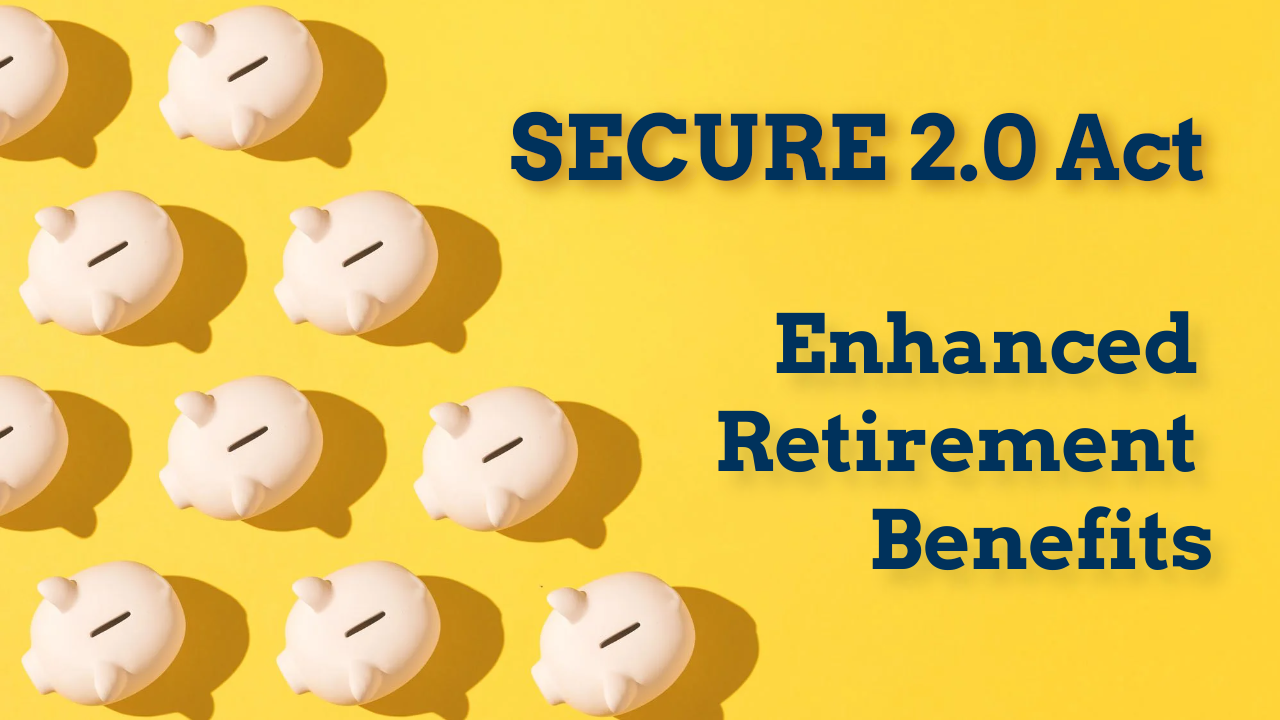SECURE 2.0 ‒ Take Advantage of Enhanced Retirement Benefits

By Lori Schock, Director of the SEC’s Office of Investor Education and Advocacy
Whether you’re starting to plan for retirement, or you’ve already been saving for years, it’s important to stay current on retirement laws and understand how you can take advantage of every benefit to help secure your financial future.
In 2022, Congress enacted the SECURE 2.0 Act, which provided changes to 401(k) and 403(b) plans. I will highlight some of the latest significant changes that you may want to consider in your retirement planning.
Higher Catch-Up Contributions
Starting in 2025, investors who are age 60-63 by the end of the taxable year can take advantage of higher catch-up contributions to their workplace retirement plans. In 2025, this means these investors can now contribute up to an additional $11,250. By comparison, investors aged 50-59 and 64+ can contribute up to an additional $7,500 in 2025. In both cases, this is in addition to the $23,500 IRS annual contribution limit. These catch-up contribution limits may change. See IRS.gov for current amounts.
Updates to Required Minimum Distributions
Investors now have greater flexibility in managing their retirement accounts. Considering increased life expectancies, the age at which you must begin taking your required minimum distribution (RMD) out of your retirement plan has gone up to age 73 (increasing to 75 in 2033).
The SECURE 2.0 Act reduces the penalty for failure to take RMDs from 50 to 25 percent. Further, if a failure to take an RMD from a qualified retirement plan is corrected in a timely manner, as defined under the Act, the penalty on the failure is further reduced from 25 percent to 10 percent.
Previously, when determining your RMD you had to include any money you have in Roth employer plans in the calculation. The SECURE 2.0 Act allows you to exclude any money you may have in Roth employer plans from your RMD calculation.
Early distributions from retirement plans are generally subject to a penalty. Beginning after December 29, 2025, the SECURE 2.0 Act will allow you to take penalty‒free early distributions up to a certain amount per year to buy long-term care insurance for yourself or your spouse. In 2025, this amount is $2,600. That amount may change. See IRS.gov for the current amount.
More Matching and Participation Options
New employer plans must automatically enroll eligible employees into their retirement plan and automatically increase the amounts of contributions as time goes by (current plans are grandfathered). The SECURE 2.0 Act also allows more long-term part-time employees to participate in a plan.
In addition to employers contributing matching funds to employees’ traditional accounts, employers can now match contributions to Roth accounts. They can also consider certain employee student loan payments as the basis for matching contributions to the retirement plan.
Penalty-Free Rollovers from College Savings Plans
If you don’t use all of the funds in a 529 college savings plan, you can make a penalty-free rollover to a Roth IRA for the same beneficiary. These rollovers have some restrictions. For example: there is an aggregate lifetime rollover limit of $35,000; annual Roth IRA contribution limits apply; the 529 account must have been open for at least 15 years; and the funds you rollover must have been in the 529 account for at least five years. This can be a great way to help give a beneficiary a head start on retirement savings. For more information about 529 plans, see Updated Investor Bulletin: An Introduction to 529 Plans and Updated Investor Bulletin: 10 Questions to Consider Before Opening a 529 Account.
Access to Emergency Funds
As part of employer plans, non-highly compensated employees will now have access to so-called pension-linked emergency savings accounts. These accounts, which may be linked to 401(k)s, are designed to allow employees to contribute up to a certain amount that can be withdrawn for emergencies without triggering the early withdrawal penalties. In 2025, this amount is $2,500. That amount may change. See IRS.gov for the current amount. This may help investors keep their retirement investments invested when life throws a curve ball.
Lost and Found
If you change jobs frequently or have just lost track of your retirement plans, there is now a “lost and found” database where you can look for your funds.
Secure Your Future
Keeping up with the latest retirement laws can be beneficial to your financial future. Review your current saving and investing plan and consider how these changes and opportunities can help better secure your retirement efforts.
Note: Director’s Take articles are written in a short, non-legalese format intended to provide you with tips and information on timely investment topics that are important to you. You can subscribe to receive Director’s Take articles or find our latest article on the Director’s Take spotlight page.





